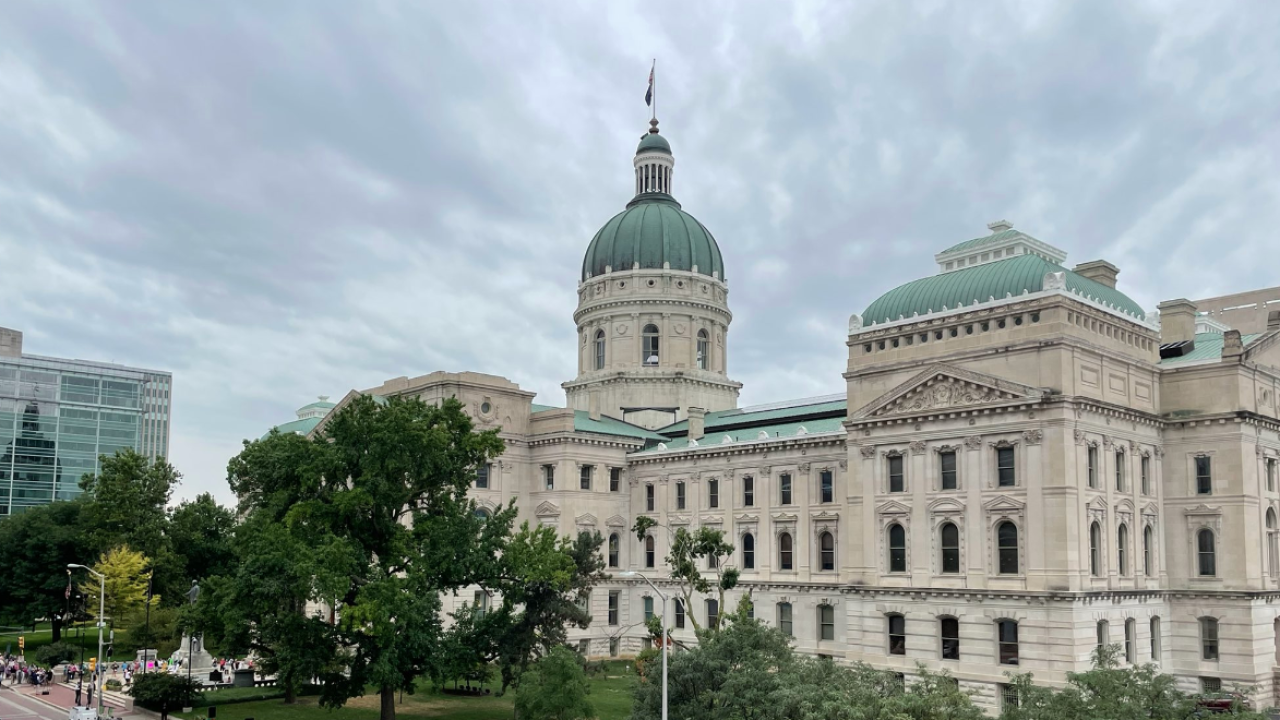INDIANAPOLIS (AP) — Indiana Republicans scaled down a proposed expansion Wednesday of a program allowing parents to spend state money directly on their child’s education expenses after critics argued it opened up such payments to private schools by even the wealthiest families.
A state Senate committee voted 8-5 to advance a bill broadening the state’s “Education Scholarship Account” program, which was first approved two years ago and limited to students in special education programs.
PREVIOUS: Indiana legislators hear testimony on four education bills
The committee endorsed setting the same income limits as currently exist in the state's private school voucher program for non-special education students, stepping back from the previous version that would have allowed all families, regardless of income, to qualify for the grants of about $6,000 a year.
The proposed “Education Scholarship Account” expansion is separate from the state’s voucher program, which state lawmakers have repeatedly loosened eligibility requirements for since its inception in 2011 amid national debates over whether taxpayer money should fund private schools.
The Republican-dominated Legislature would need to allocate money separately to the expansion. Republican Sen. Brian Buchanan of Lebanon, the bill's sponsor, said he favored steps where “parents are in control.”
“I think the parents are the ultimate judge of the, you know, are they getting what they want for their child’s education and to evaluate performance," Buchanan said.
Indiana’s private school voucher program is already one of the broadest in the United States — and some Republican lawmakers want to see a universal system like in Arizona, where the state’s Republican governor in July signed, against strong opposition, a law that allows every parent to use public funds for private tuition or other education costs.
Those opposed to Indiana’s aid expansion say the system draws money away from traditional public schools, where the vast majority of students in the state learn. In the 2021-22 school year, about 1 million Indiana students attended traditional public schools, according to the state Department of Education.
“I’m concerned about the changing narrative that we began with two years ago, with students who are special education students, and that it changed,” said Democratic Sen. Fady Qaddoura, of Indianapolis. “In some communities, especially rural communities, their only choice is traditional schools. By extending the vouchers, you’re defunding those public schools in rural communities.”
Indiana’s voucher system has grown from $16 million in payments for about 3,900 students to an estimated $241 million for some 44,000 students last school year. Republican House Speaker Todd Huston has expressed support for further broadening the program, saying in his opening speech for this year’s legislative session that “we’re going to build” on what he calls a success.
“Every Hoosier parent should have the opportunity to send their child to the school of their choice,” Huston said.
A voucher program expansion approved by lawmakers in 2021 raised income eligibility for a family of four from $96,000 a year to about $154,000 for this school year, leading to a 24% jump in total voucher students in the first year. That same income cap — at 300% of eligibility for the federal reduced price lunch program — would apply to the proposed “Education Scholarship Account” expansion.
A separate House bill calling for elimination of voucher income limits hasn’t yet been taken up this year. An analysis of that proposal by the nonpartisan Legislative Services Agency projects a near doubling to more than 85,000 voucher students in the next two years and nearly $230 million in additional cost.
Westfield parent Michelle Foley said in testimony last week that the original expansion would benefit families like hers, which earn above the current income cap but often make tradeoffs between treatment for children’s disabilities and paying school tuition.
“Income requirements for the ESA program have kept our children from accessing options others could,” Foley said. “As a parent, how do you choose between $2,000 a month in insulin and diabetes supplies, or a $10,000 deductible, and life-changing learning interventions?"


